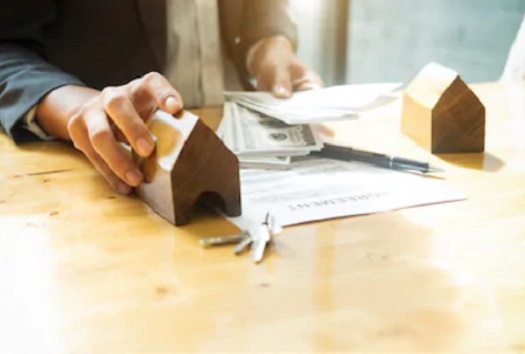Selling a home, without question, is a stressful experience. You’re not only working to sell your current house, but you’re also planning for your upcoming move. And in the midst of all that, you’ve got to contend with buyers touring your property.
But with the best-matched real estate agent as your ally, and with a bit of foresight, you can alleviate stress, sell your home quickly, and for the highest possible price. Here are six steps to selling your home.
Step One: Find the Best Real Estate Agent for You
Every real estate agent is different. They have different areas of expertise, unique communication skills, and personalities.
Look for an agent who is familiar with your area, including community features like parks, schools, entertainment, recreation, and all the nuances that make your neighborhood special. Buyers aren’t just looking for a house; they’re also buying into a neighborhood.

Select an agent who has experience selling the type of house you’re listing. For example, if you’re selling a single-family home, you wouldn’t choose an agent whose area of expertise is condominiums and townhomes.
Pick an agent who is easy for you to communicate with; you’ll be working with your agent closely over the next few months.
Check real estate agent ratings and reviews, and ask family, friends, co-workers, and associates who they would recommend.
Step Two: Price Your House to Sell
One of the tricks to selling your home quickly is to price it competitively from the start.
The value of your house is based on current real estate market trends. In a seller’s market, your home’s price can go up; in a buyer’s market, it decreases.
Your agent will give you a report called a comprehensive market analysis. In that report is data regarding recently sold homes in your area as well as their sales prices.
This information is relevant because it gives you an accurate snapshot of what buyers are willing to pay for real estate. You can ask any sales price you like, but if buyers are finding other similar homes in your area at a better value, yours will stay on the market and could go stagnant.
The longer a home sits on the real estate market, the less likely it is to sell. After a period of time, people begin to wonder why the property isn’t selling and if there might be something unattractive about the house.
The same is true with price reductions. The more times you reduce the price, the more buyers begin to question the value.
Your agent, who has sold many homes, can hone in on its market value. He or she may also give you ways to improve the perceived value of your home, so potential buyers might be willing to pay a higher price.
Step Three: Staging Your House to Sell
Staging means fixing, cleaning, and preparing your house for showings, much like you’d prepare yourself for an important meeting, job interview, date, or social event.
Know going in that your property will be appraised and inspected before the sale is completed, so you’ll need to make sure everything is in good condition and working order.

An inspector will look at your foundation, roof, walls, heating and cooling, water heater, plumbing, electrical, and more. If anything needs fixing, then fix it before you list.
Next, you’ll move through the phases of decluttering, depersonalizing, deep cleaning, and accentuating inside and out to create charming curb appeal and an inviting interior.
Ask your real estate agent for more information about how you can prep your house for sale for virtual and in-person showings.
Step Four: Marketing and Showing Your Home
Whether you’re showing your home virtually, in-person, or both, a few things remain true. Ask your agent about safe practices for marketing your home digitally and in person.
Keep the house in show-ready condition at all times. By marketing your home digitally, you’re able to refine showings to serious buyers only.
But when a serious buyer is ready to take a closer look, you’ve got to be prepared with about an hour’s notice. Your agent may also choose to do a virtual open house where interested parties can ask questions via chat during a live feed.
During showings, it’s best if you (and your pets) aren’t at home. Pets can make people uncomfortable, aggravate allergies, or bark excessively during walkthroughs.
Step Five: Offers and Negotiations
Reviewing offers can be tricky. In the best-case scenario, you’ll receive more than one offer and will have to determine which offer is best suited to you. And it’s not all about the money.
Consider, first, the money – but then look at whether the buyer is pre-approved for their home mortgage loan. If not, your sale could be delayed, or in the worst-case scenario, fall through because the buyer couldn’t get financing.

Then, assess the buyer’s proposed closing date to see if their timeline aligns with yours. There may be other contingencies, too, such as the buyer needing to sell their current home to fund the purchase of yours.
Your agent will advise you in reviewing offers and help you understand the differences between them.
Step 6: The Closing Process
During the closing process, when the house is in escrow, several things take place.
First, the title is checked to ensure that there are no holds or liens on the property.
An appraiser and an inspector, independently, will visit your property to assess its value as well as its condition. Expect to schedule a few more appointments before closing day. As with showing your home, it’s best if you plan not to be home during the appraisal and inspection.
If your property doesn’t appraise for the asking price, expect the buyer to negotiate a lower price.
When an inspector finds an issue, the buyer can ask you to make repairs before they move in, ask for a price reduction so that they can make repairs themselves – or, if the problems are insurmountable, can cancel the contract.
Until completion of the appraisal and inspection, the contract isn’t final. However, when the appraisal and inspection have passed, the buyer can no longer re-negotiate or back out of the contract.
Conclusion
Selling a home isn’t easy, but it doesn’t need to be overly complicated or stressful, either.
Make sure that any necessary fix-it projects are completed before you list your home. Anything in disrepair could cause complications in your real estate transaction.
Find the expert real estate agent that’s best for you. Work with that agent to create a competitive asking price for your house. Stage your home for virtual and in-person showings. When the property is being shown, appraised, and inspected, make arrangements for your household – pets included – to be away from home.
Review offers thoroughly and allow your agent to help you decipher what offer best matches your needs in terms of price, timeline, closing costs, and other contingencies.
Most of the documents that need to be signed can be done digitally with an e-signature. And, you don’t need to attend the closing meeting if you’ve permitted your agent to attend on your behalf.
Ask your agent about more ways to prepare to sell your house as quickly as possible and for the highest price.
Have Questions? Ask Allison!
Your real estate agent is the best source of information about the local community and real estate topics. Give Allison Norman call today at 707-799-3617 to learn more about local areas, discuss selling a house, or tour available homes for sale

